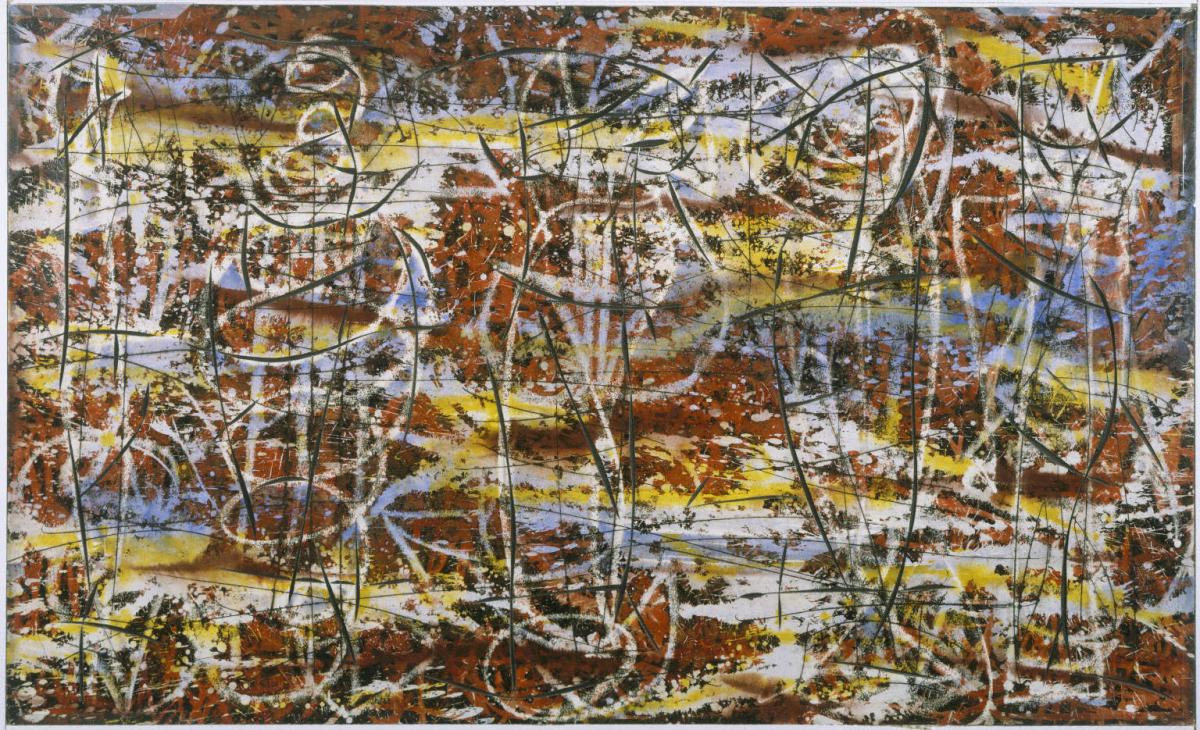Five Brothers
Alfonso Ossorio ( 1950 )

Duncan Phillips favored the poetic and lyrical side of Abstract Expressionism over the more forceful and aggressive works. When Phillips first came into contact with Alfonso Ossorio in 1951, he was immediately taken with the artist’s work. Ossorio was a member of the first generation of the Abstract Expressionist painters, and his work was akin to the paintings of Jackson Pollock, his close friend and colleague. Phillips and Ossorio met at the Betty Parson Gallery in November 1951, where an exhibition of his work was on view. After seeing his work, Phillips immediately purchased Five Brothers, which was featured in the exhibition. He later included the painting in an exhibition of Abstract Expressionist paintings at the Phillips Memorial Gallery in 1952.
Five Brothers was executed in 1950, around the time that Ossorio was completing a commission on a church in the Philippines. It revealed his interests in surrealism as well as Pollock’s complex surfaces. Though the title refers to a specific image, Ossorio rejected the use of descriptive images, while stressing free and spontaneous expression in his art. The materials he used—paper, watercolor pain, ink, and wax—were what were readily available to him. It is possible that the paper was his brother’s Tiffany and Co. stationary. Trying to reflect Pollock’s surface texture, Ossorio distressed the paper prior to painting it, enhancing the texture of the image.